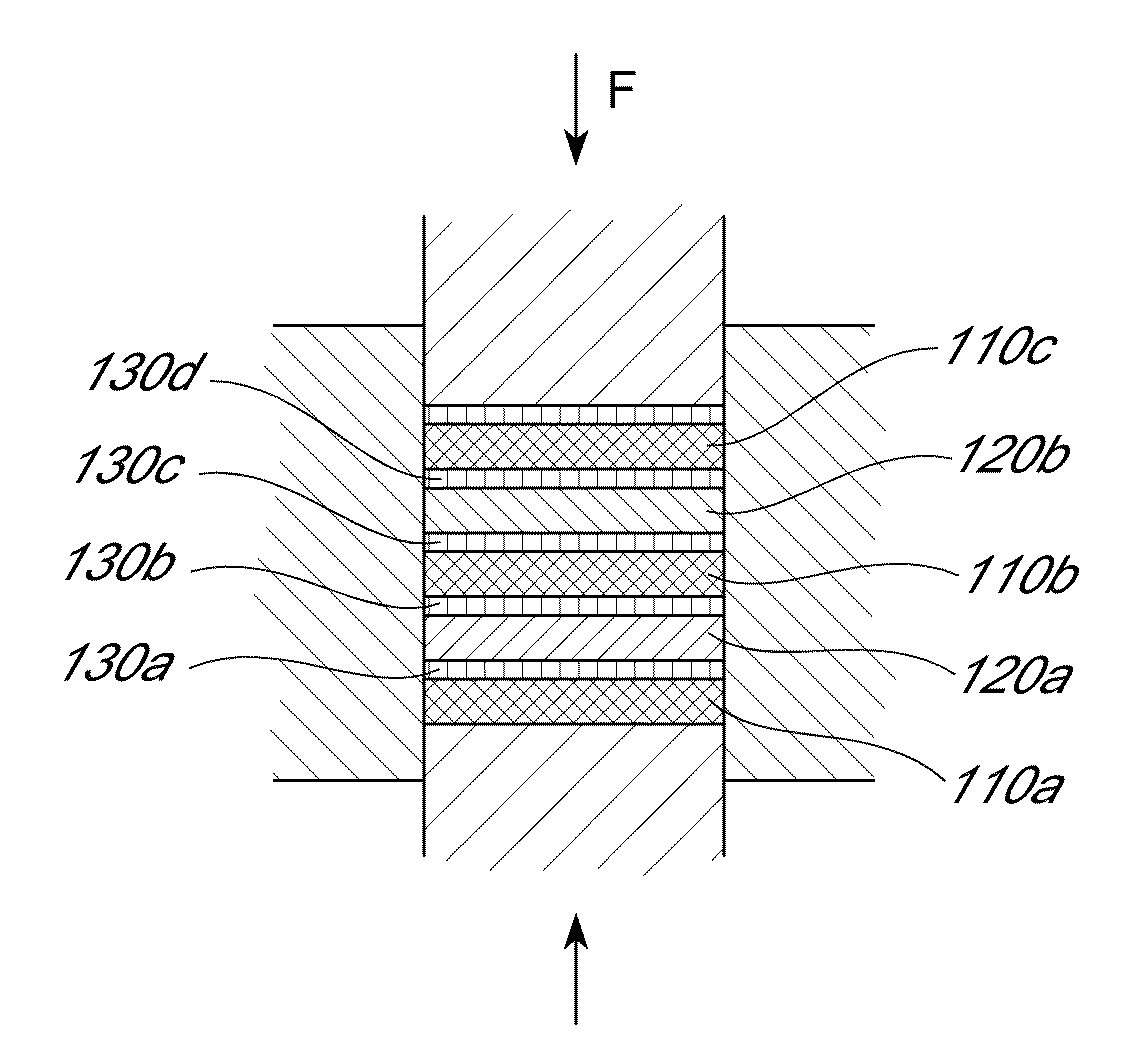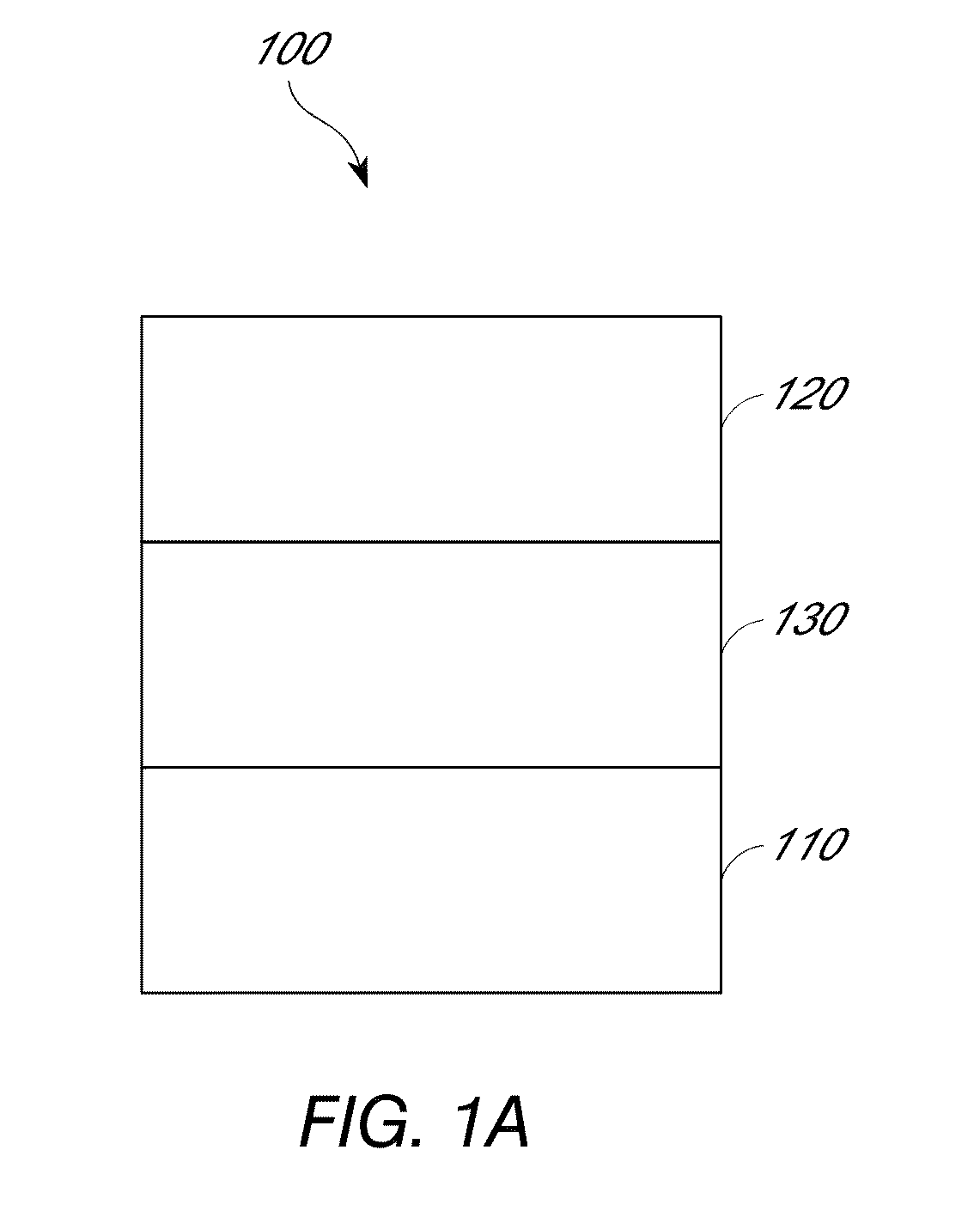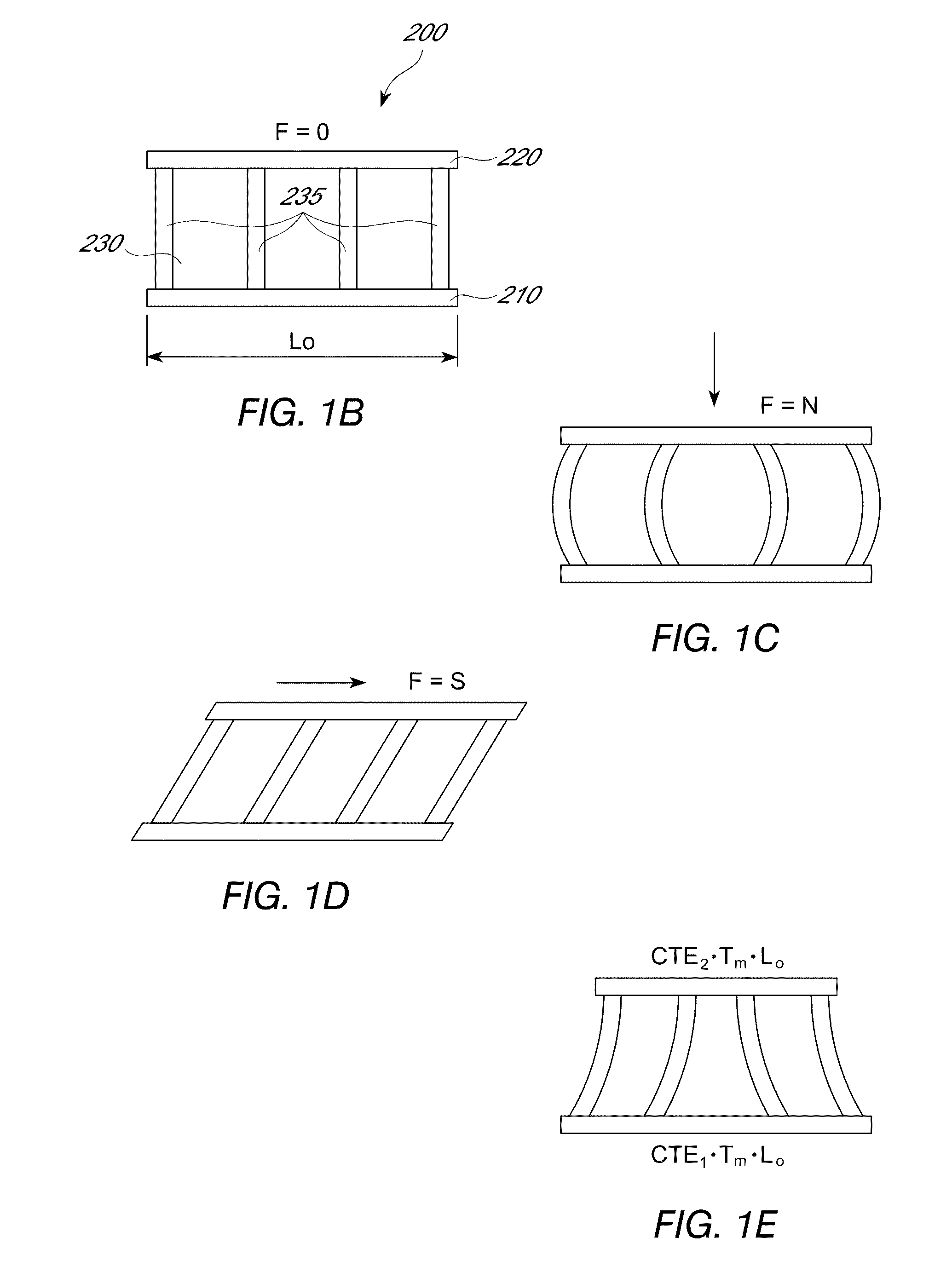Thermoelectric devices with interface materials and methods of manufacturing the same
a technology of interface materials and thermoelectric devices, which is applied in the manufacture/treatment of thermoelectric devices, electrical devices, non-conductive materials with dispersed conductive materials, etc., can solve the problems of increasing stress at the interface between, and achieve the effect of reducing the stress at the interfa
- Summary
- Abstract
- Description
- Claims
- Application Information
AI Technical Summary
Benefits of technology
Problems solved by technology
Method used
Image
Examples
Embodiment Construction
[0047]Several methods can be used to reduce interface stresses between shunts and thermoelectric materials in thermoelectric devices. For example, thermoelectric materials can be bonded, e.g., brazed, soldered, or diffusion bonded, to shunts with CTE selected to match the CTE of the thermoelectric materials. Thermoelectric materials can also be bonded to compliant pads made of composite material wherein one of the phases can have a melting point lower than the operating temperature of the hot shunt. During operation, this phase can melt and the shunt material can yield (e.g., undergo plastic deformation) and reduce stress at the interface. Other methods for reducing stress at the shunt-thermoelectric material interface can be based on providing sliding contacts by placing metal foils, graphite foils, or metal meshes between the shunt and thermoelectric material. In these cases, materials placed at the interface may not react with the thermoelectric materials. Another method to reduc...
PUM
 Login to View More
Login to View More Abstract
Description
Claims
Application Information
 Login to View More
Login to View More - R&D
- Intellectual Property
- Life Sciences
- Materials
- Tech Scout
- Unparalleled Data Quality
- Higher Quality Content
- 60% Fewer Hallucinations
Browse by: Latest US Patents, China's latest patents, Technical Efficacy Thesaurus, Application Domain, Technology Topic, Popular Technical Reports.
© 2025 PatSnap. All rights reserved.Legal|Privacy policy|Modern Slavery Act Transparency Statement|Sitemap|About US| Contact US: help@patsnap.com



